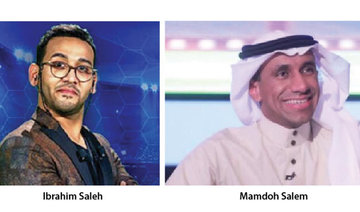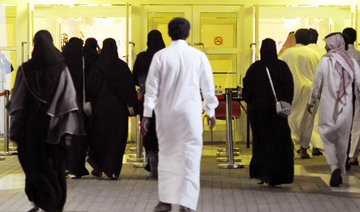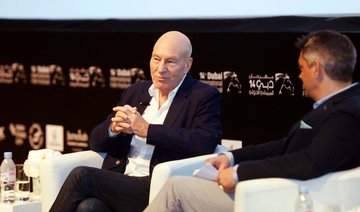DUBAI: The Dubai International Film Festival (DIFF), which is set to run until Dec. 13, once again brings together a wealth of regional and international filmmaking talent. Aside from the Hollywood and Bollywood blockbusters, DIFF is a place where you can find some of the hottest Arab filmmakers’ latest work.
Arab News took a look at a selection of the short films created by Arab talent currently showing at DIFF in the festival’s Muhr Shorts category and found regional filmmakers taking on social, personal and political issues in innovative and interesting ways and through a variety of genres.
In English-language short “The Scapegoat,” Saudi filmmaker Talha B. creates a smart conceit to examine the psyche. Bestselling author Paul Dugan is struggling to write his next novel and decides to try and break his writer’s block by isolating himself in a cabin in the woods. He is joined for dinner by three personifications of his inner thoughts — the antagonistic, critical Vincent; preppy, theatrical optimist Orson; and the timid, intellectual Michael. Paul has concluded one of them has to be eliminated in order for him to continue his writing. He can’t decide which, so decides Russian roulette is the way to go.
Egyptian-American actor and comedian Ahmed Ahmed plays all four roles, and does so winningly, creating subtle physical and vocal nuances for each character. Talha B. has a knack for producing strikingly framed shots and manages to convey a sense of the mental claustrophobia plaguing Dugan. It’s an example of a good idea delivered well — not an easy feat, as several of the other shorts show.
Take “Arasian,” from Emirati filmmaker Ahmad Al Tunaiji. The idea — a half-Filipino, half-Emirati schoolboy being bullied because of his mixed heritage and trying to find the courage to stand up for his Filipino side — is a compelling one, tackling themes of racism, peer pressure and cultural identity. But it is let down badly by some wooden acting and some confusing story developments.
The echo of “Smile, Khalifa. Smile” in the dialogue shows promise, as does the decision to stick to a refreshingly downbeat, pessimistic conclusion. The idea deserved better though.
Glaring plot holes also emerge in Bahraini filmmaker Ahmed Al-Kuwaiti’s “A Time To Pray.” Once again, there’s a striking central idea — a heavily pregnant liberal Egyptian lady is stranded with her more conservative Emirati friend and they have to take refuge in a nearby (men-only) mosque. But that idea is undone by clunky storytelling. The duo’s car, for example, has apparently broken down in a “faraway” area, but in one exterior shot it’s clear the mosque is at an intersection of main roads on which several cars are visible along with a number of tall buildings.
While there are some engaging moments, particularly when the two women are huddled in a toilet cubicle while the imam and a few worshipers complete their ablutions, overall the filmmaker seems to have been so excited about tackling a potentially controversial story that he neglected certain tasks that would have told that story in a compelling way.
“Lollipop,” by Hanaa Saleh Alfassi is a genuinely daring film in which a 14-year-old girl in Saudi Arabia reaches puberty (the only color in the black-and-white movie is the red of her menstrual blood) and learns to deal with the discomfort caused by her body’s development, which has caught the leering, sinister eye of the father of one of her schoolmates.
The lead actress gives an eye-catching, convincing performance and Alfassi conveys an empathetic understanding of teenage peer pressure. “Lollipop” will likely garner attention for its focus on a sensitive subject, but — although the film has its flaws — Alfassi shows enough promise to suggest she could become known for more than just headline-generating controversy.
There aren’t many sci-fi films coming out of the region, so “The Remaining Time,” from Emirati director Mohammed Al-Hammadi, is a welcome addition to DIFF’s schedule. Aliens have invaded — and practically obliterated — Earth. Sarah is alone in a room, waiting for her husband, a soldier, to return. Instead, a stranger arrives asking for shelter. The tension builds nicely as the audience begins to realize how vulnerable Sarah has made herself by doing the supposedly right thing and letting him in.
The simplicity of the idea and the single location make this a good example of how short films can tell a compelling story when the filmmaker does not overcomplicate things.
That is a lesson that Saudi filmmaker Hajjar Alnaim does not heed in “Detained,” the story of Lara, a Syrian refugee detained in the US because of her father’s alleged terrorist activities. While the film is nicely shot, with some excellent performances (if you can forgive a propensity for dramatic pauses), it seems Alnaim and her co-writer wanted to cram too much in, leading to some unwieldy dialogue. “I am a well-respected human rights lawyer!” shouts one character, unconvincingly. It is a shame, because, once again, the idea at the heart of “Detained” is a strong one, touching on themes of familial loyalty, patriotism and duty.
In “When The Sky Began To Scream,” a disturbing dystopian tale from Tunisian-Canadian director Kays Mejri, a husband and wife are stranded on a “forgotten road” and set upon by a cultish band of gravediggers. It is not exactly clear why these men have become so insanely violent — “the land is cursed,” says an old crone to the wife at one point — but that makes it all the more intriguing. The married couple, after all, would not know why, either. They just know they need to escape. This is one of those stories where much is left to the viewer’s imagination, and it is all the stronger for it. Haunting imagery abounds in “When The Sky Began To Scream.” Sometimes you do not have to spell everything out.
“Dimmed Light,” a stop-motion animation from Emirati filmmaker Waleed Al-Shehhi, illustrates that point. The seven-minute film’s main “character” is the wick of a shattered lantern trying to put its “home” back together and re-hang it in its proper place in a room that has been devastated by a bomb blast. The poignant final scene does justice to the slow build-up as the camera’s focus gradually expands from the wick to take in the whole room, revealing the full extent of the explosion’s aftermath.
The most successful example of the power of short films in the selection from DIFF seen by Arab News comes from Palestinian filmmaker Ameen Nayfeh. In “The Crossing,” Nayfeh takes a familiar topic — Palestinians trying to cross the border wall to see family on the other side — and addresses familiar themes, including the Israeli occupation, the day-to-day oppression of Palestinians and the assaults on their dignity. However, he does so by focusing on the personal and thereby making it all the more universal and relatable.
Shadi, his sister Maryam and elder brother Mohammed are going to visit their grandparents. It has been four years since Shadi and Maryam have managed to get the relevant permits. At first it seems as though the film is going to be about how, even with those permits, they still will not be allowed to cross. We do see examples of that — the heart-breaking casual cruelty of the border guards contrasted in a nicely understated way with the forbearance of those trying to cross; “Is your son dead?” the guard enquires of one man trying to visit his son in hospital. “No,” he replies. “Then come back tomorrow” — but in fact the denouement of “The Crossing” is not what you expect and the characters’ reactions are beautifully portrayed and captured.
By keeping things simple and making sure the quality of the script and acting does justice to the idea around which it is formed, “The Crossing” shows that the tricky art of making a short film is one that can reward both maker and viewer.
Arab short films tackle weighty topics at the Dubai International Film Festival
Arab short films tackle weighty topics at the Dubai International Film Festival
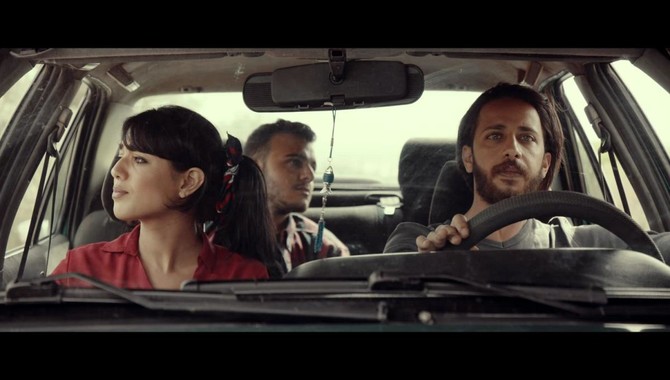
REVIEW: Sofia Boutella’s heroic efforts can’t save ‘Rebel Moon — Part Two’
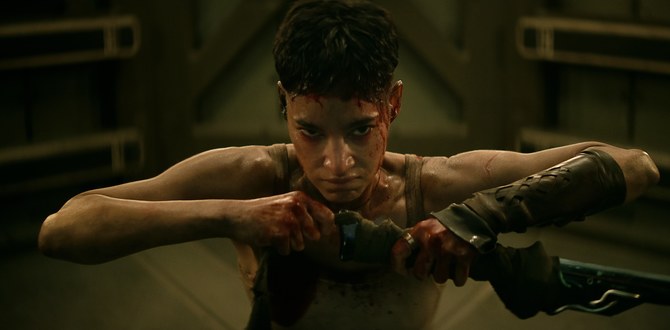
DUBAI: “Rebel Moon — Part One: A Child of Fire” drew scathing reviews (our writer described it as perhaps “the most discombobulating collection of mismatched sci-fi tropes ever committed to film”). “Part Two: The Scargiver” simply adds to that legacy.
The story: Former Imperium soldier Kora and the surviving band of ragtag warriors she’s recruited return to the moon of Veldt — home to simple farming folk in danger of being blown to bits by the mighty Imperium for failing to supply the unreasonable grain quota demanded of them. With just a few days before the deadline, Kora and her band must train the villagers to fight (and harvest the grain in just three days to provide a bargaining chip). What Kora doesn’t know is that Admiral Noble, the bad guy she ‘killed,’ is still alive. And bent on vengeance.
Before the enemy arrives, the warriors tell their life stories in a trust-building exercise — one of the clunkiest pieces of exposition ever written. There are slow-mo shots of the harvest gathering and a brief interlude to show that Kora and farmer Gunnar are very much in love.
Then, thankfully, we’re into the battle(s). Here, at least, director Zack Snyder doesn’t disappoint, even giving an original twist to the ‘spaceship plummeting from the sky’ trope by staging a showdown between Kora, Gunnar and Admiral Noble on a floor that becomes increasingly vertical. Below them, the villagers fight heroically against odds very much stacked against them, even with the help of Nemesis and her two flaming definitely-not-lightsabers.
The well-constructed battle scenes, though, aren’t enough. Not even with a cast fighting as heroically as the villagers to salvage something. Sofia Boutella, as Kora, emerges with most credit, proving herself a convincing action hero who deserves better than this material to work with (spoiler alert: perhaps even material that allows the heroine to kill the bad guy herself, without the intervention of her boyfriend).
Yes, no one’s sitting down to watch an “epic space opera” in the expectation of thought-provoking dialogue, but “Rebel Moon” is like the result of forcing a seven-year-old to watch all things “Star Wars” and “Star Trek” in random order, then asking them to write down what happened. The best thing to say about “The Scargiver” is that it finishes — but even that comfort is tainted by Snyder’s cynical setting up of a potential part three. Possibly because that seven-year-old fell asleep before writing an actual ending.
Saudi Arabian history on display at Abu Dhabi Book Fair
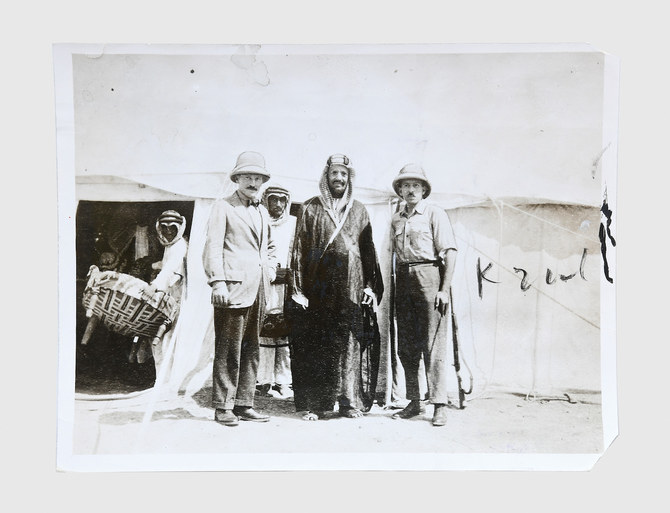
- Selections from London-based rare-book dealer Peter Harrington’s offering at the UAE fair
‘Ibn Saud press photograph’

According to notes from rare books specialists from Peter Harrington’s team, this image from archives of The Times newspaper was taken in what was then called Hejaz, following a “critical and secretive meeting between (founder of Saudi Arabia) Ibn Saud (center) and the British representative Sir Gilbert Clayton (left) — one of a pivotal series of negotiations which led to the Treaty of Jeddah in May 1927.” The two discussed “various outstanding questions affecting the relations of the Kingdom of the Hejaz and Nejd with the neighboring states of Iraq and Transjordan” to help determine the northern borders of Saudi Arabia. “Discussions over the borders were protracted and complex, with the towns of Maʿan and Kaf the object of particularly intense debate,” the notes state.
‘Pilgrimage to El-Medinah and Mecca’ by Richard F. Burton
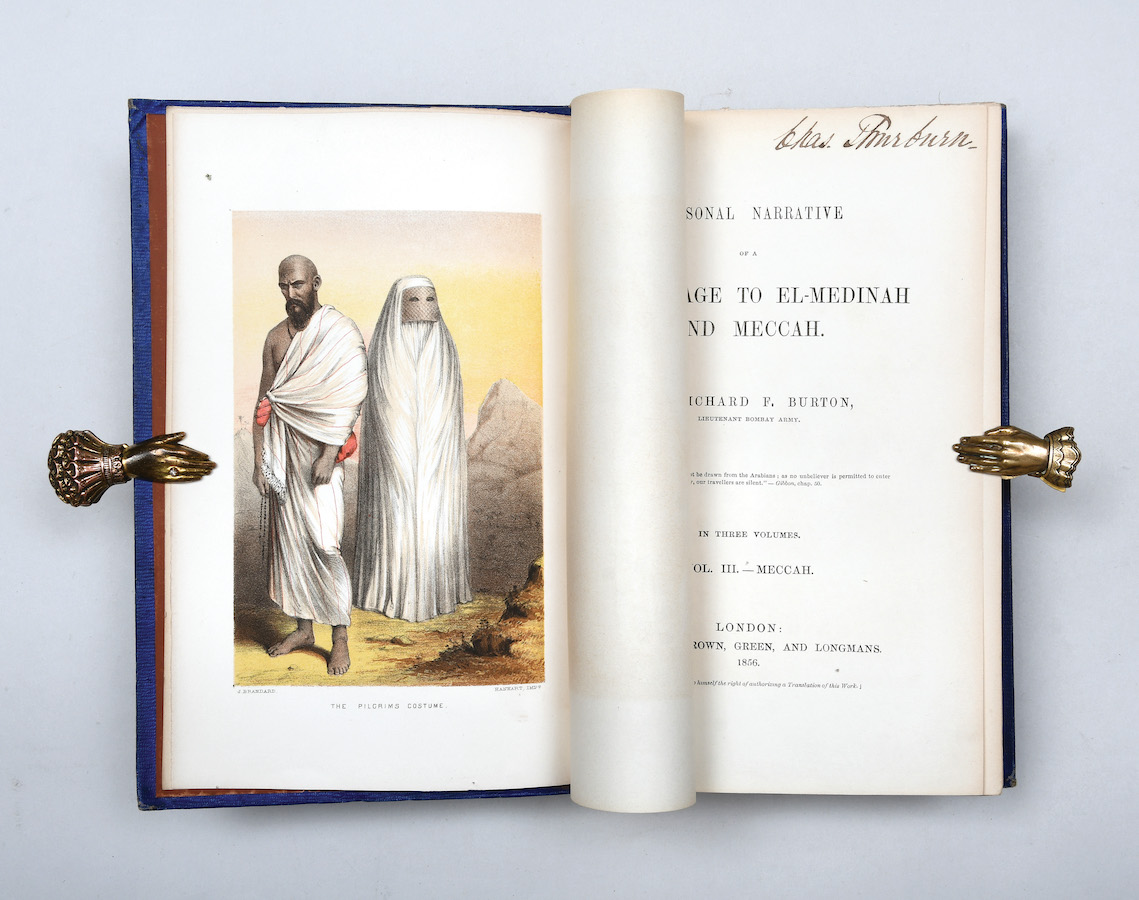
In this three-volume first edition, complete with illustrations, of “one of the most extraordinary travel narratives of the 19th century,” the British explorer, writer and polyglot Richard Francis Burton recounts his Hajj journey, made “in complete disguise as a Muslim native of the Middle East” at a time when fewer than half-a-dozen Europeans had made the pilgrimage — forbidden to non-Muslims. “It surpassed all preceding Western accounts of the holy cities of Islam, made Burton famous, and became a classic of travel literature, described by T. E. Lawrence as ‘a most remarkable work of the highest value,’” the team from Peter Harrington note. In Makkah, Burton performed all the rites of the pilgrimage and his subterfuge remained undiscovered.
‘Map and Overview Presenting the Hejaz Railway Route’

This map from 1903 depicts the route of the ambitious Hejaz Railway project. It “depicts a very broad area, extending from just north of Hama, Syria, all the way south a little way past Makkah, in the Hejaz; it covers most of Syria, all of Palestine, the Sinai Peninsula, the Suez Canal, and all the north-western Arabian Peninsula,” Peter Harrington’s rare book experts write. “It clearly delineates those parts of the railway that are in place and those under construction … with each station labelled. Additionally, it depicts the two alternative routes proposed for extending the line to Makkah, employing broken lines, while another line traces the proposed (but unrealized) route of a rail line from Makkah to Jeddah. The map also labels important roads and caravan routes.”
Four years after this map was published, the book seller’s notes state, the railway reached AlUla, which is not marked on this map, although Mada’in Salah (now Hegra) is, which today is the site of one of two museums dedicated to the Hejaz Railway.
By 1908, the railway had reached Madinah, where, the notes state, “for various political reasons, it had to be terminated.” Nevertheless, they continue, “until the outbreak of the First World War, it allowed hundreds of thousands of pilgrims to make the Hajj in safety and with relative ease.”
‘Material from the library of Peter O’Toole by T.E. Lawrence’
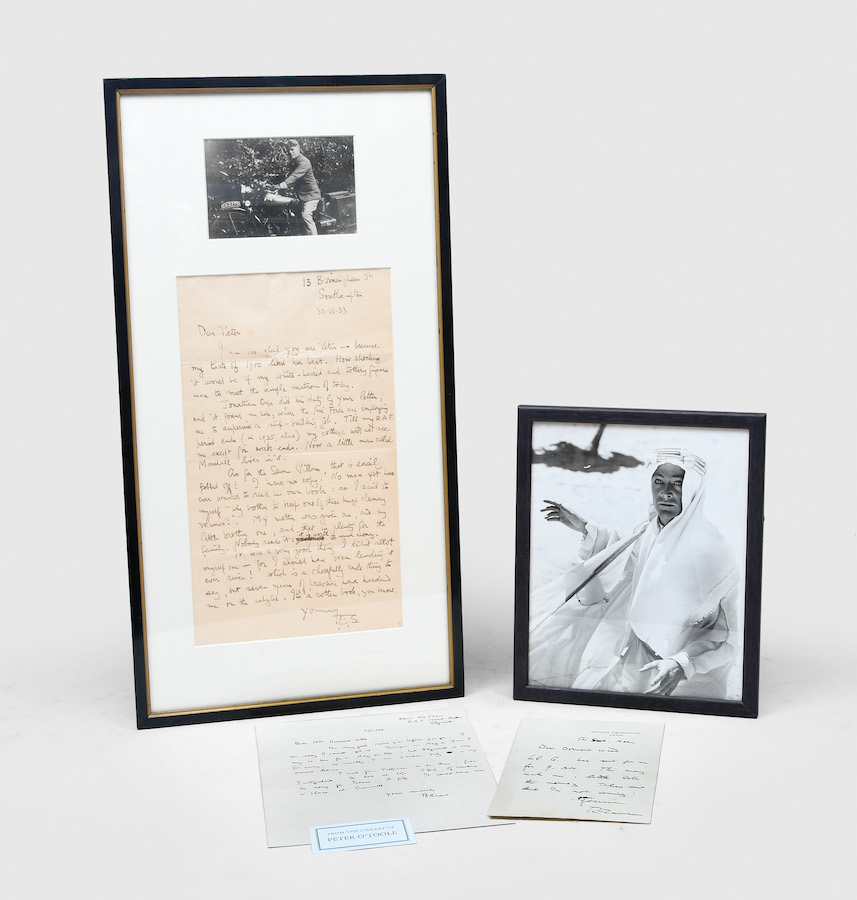
Billed by Peter Harrington as an “insightful archive, spanning Lawrence’s transformation from man of the moment to unwilling celebrity, from the library of Peter O’Toole, whose breakthrough portrayal in David Lean’s 1962 biopic still shapes perceptions of the famous Arabist. Autograph material from Lawrence is always highly prized, but rarely is its provenance so apposite.”
The centerpiece of the material is a photograph and an unpublished letter written by Lawrence (who became known as Lawrence of Arabia following his journeys across the Middle East, including modern-day Saudi Arabia), framed as a piece and gifted to the English actor who played Lawrence in the aforementioned biopic by his wife, Sian, and a friend not long before the premiere of the movie. The letter makes clear Lawrence’s difficult relationship with his celebrity, and is cutting about his own book, “The Seven Pillars of Wisdom,” saying that he did not own a copy himself (“No man yet has ever wanted to read his own book”) but that his mother and “little brother” did, “and that is plenty for the family. Nobody reads it: it is worth too much money. ... It is a rotten book, you know.”
‘Oil Region in the Desert of Saudi Arabia’
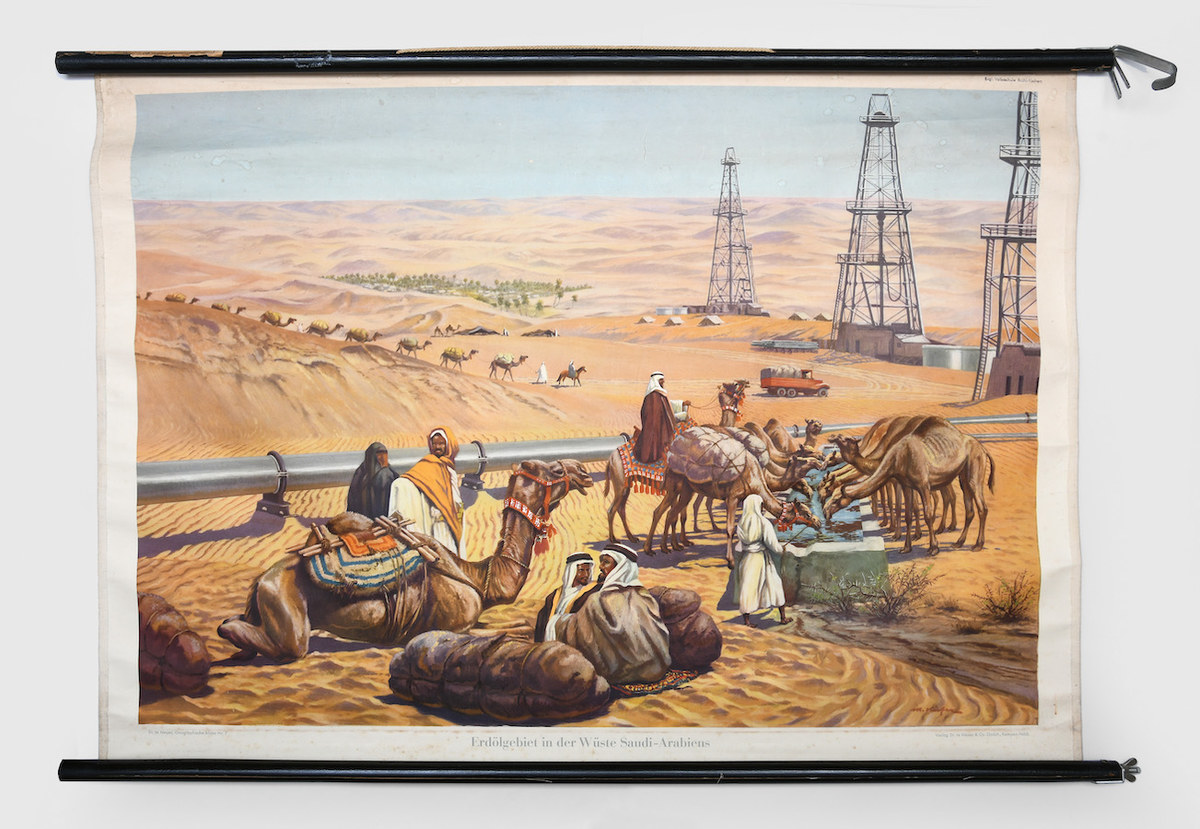
This 1950 image, “after a painting by the German artist Michael Mathias Kiefer,” is one of a series of geographical pictures intended for use in the curriculum of German schools. “The painting juxtaposes Arab figures in traditional garb with images of drilling rigs, a lorry, and oil storage tanks, creating a strikingly orientalist image,” Peter Harrington’s notes state. “In the middle of the composition, a pipeline bisects the image, a forceful reminder of the centrality of oil to the modern Saudi Arabian economy. In the foreground, members of a group of travelers, possibly intended to be Bedouins, rest on a carpet and let their camels drink from a water tank. Away in the background, before a distant oasis, more travelers arrive at a campsite, their camels heavily laden. Their destination is the oil infrastructure that crowds the right of the image.”
An enduring bond: A Jordanian photographer has turned his focus on two of the Arab world’s most beloved creatures

- Tariq Dajani’s first photographic exhibition of the horse and falcon series is on display at Ahlam Gallery in Al-Olaya, Riyadh
- Arabian horses have been the subject of songs and poetry praising their individual and physical qualities down through the ages
RIYADH: The Arabian horse and hunting falcon are important historical and cultural symbols for the Arab world, both ancient and modern.
Now a Riyadh gallery is highlighting this enduring bond with a series of portrait studies of both creatures by Tariq Dajani, a Jordanian photographer and printmaker.
Arabian horses have been the subject of songs and poetry praising their individual and physical qualities down through the ages.
However, Dajani, an owner of Arabians, chose to reflect his love of these creatures through photography and artworks.

Over the years he spent many sessions photographing horses in his native Jordan, as well as the UAE and Saudi Arabia. Later, toward the end of the project, he added the hunting falcon, another symbol of cultural heritage and pride among Arabs.
Dajani’s first photographic exhibition of the horse and falcon series is on display at Ahlam Gallery in Al-Olaya, Riyadh.
Entitled “Drinkers of the Wind,” the exhibition is the result of 16 years’ work creating portraits of these magnificent creatures.

Dajani told Arab News that he is delighted to be able to display his work in Saudi Arabia, “a country that is deeply connected to the horse and the falcon.”
Ahlam Gallery is the perfect place to showcase these artworks, he added.
Dajani’s treatment of his subjects is not in the usual natural or romantic manner. Instead, and this is partly what sets his art apart, he uses a studio portrait approach, where he takes his studio to the stables or falcon sheds, and spends time carefully working on portrait studies of the creatures.
“My aim is to find a connection of sorts with the horse or the birds,” he said. “I am not interested in documenting the creature; I try to go deeper, to express something emotionally if I can.
“I was living in Sweden when I decided to photograph the Arabian horse. So I had to return to the Middle East, and I started with Jordan, my home country.
“The way I approach the work is to present the horse on a backdrop where all my focus — and thus the viewers of the final picture — will be on the animal itself and not on the environment that it is in.”

While photographing in Jordan, Dajani met Princess Alia Al-Hussein, eldest daughter of the late King Hussein of Jordan. He presented some of his work to her, and received her enthusiastic approval.
Princess Alia gave him permission to photograph the horses of the Royal Jordanian Stud, and has continued to support his work over the years, opening his first two exhibitions in Jordan.
“I had access to some of the most beautiful horses in Jordan when I first started my project. My first exhibition solely of Jordanian Arabians was a great success,” Dajani said.
“Encouraged by the reception, and by now totally absorbed in this project, I went to Dubai, then Abu Dhabi, then Saudi Arabia, where I was presented with some of the most magnificent Arabian horses to photograph. Along the way, I introduced portrait studies of the hunting falcon. They, too, are strikingly beautiful and have a special place in Arab culture and heritage.
“I will always remain very grateful to Princess Alia for her initial support, and to many others for encouraging the work and opening doors for me along the way.”

One of his most striking photographs shows two mares bringing their heads together in a gentle greeting.
“This incredible and totally unanticipated greeting happened while I was photographing at the King Abdulaziz Arabian Horse Center in Dirab, south of Riyadh. The two mares were led out onto my backdrop studio space from opposite sides, and when they approached each other, they gently and courteously touched their heads as if to say hello,” he said.
“It was so special. No one had ever witnessed this before. We all held our breath as we watched in amazement. I frequently think that it would be nice if these sensitive, clever creatures could teach us humans a little bit of gentleness and respect.”
Dajani’s exhibition features high-quality photographic color prints, and a smaller collection of photogravure prints, produced by manually pulling an inked metal plate, engraved with the photographic image, through a traditional printing press — a slow and difficult process that produces prints with a special feel and texture.
Moroccan director Asmae El-Moudir joins Cannes’ Un Certain Regard jury
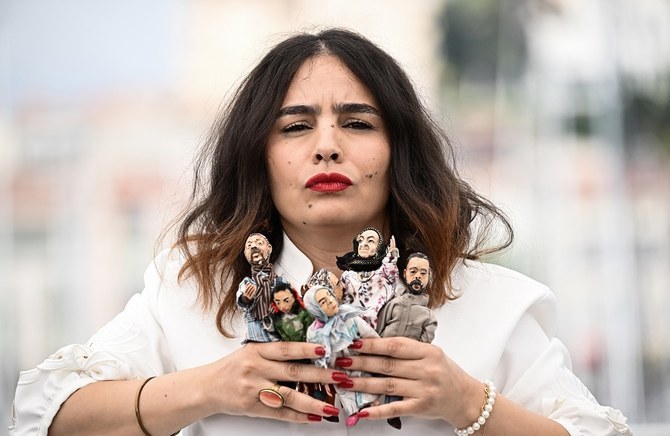
DUBAI: The Cannes Film Festival announced on Thursday that Moroccan director, screenwriter and producer Asmae El-Moudir will be part of the Un Certain Regard jury at the 77th edition of the event, set to take place from May 14-25.
She will be joined by French Senegalese screenwriter and director Maïmouna Doucouré, German Luxembourg actress Vicky Krieps and American film critic, director, and writer Todd McCarthy.
Xavier Dolan will be the president of the Un Certain Regard jury.
The team will oversee the awarding of prizes for the Un Certain Regard section, which highlights art and discovery films by emerging auteurs, from a selection of 18 works, including eight debut films.
El-Moudir is the director of the critically acclaimed film “The Mother of All Lies.”
The movie took the honors in the Un Certain Regard section, as well as winning the prestigious L’oeil d’Or prize for best documentary at the festival in 2023. The film explores El-Moudir’s personal journey, unraveling the mysteries of her family’s history against the backdrop of the 1981 bread riots in Casablanca.
El-Moudir is not the only Arab joining the Cannes team.
Moroccan Belgian actress Lubna Azabal this week was appointed the president of the Short Film and La Cinef Jury of the festival. The La Cinef prizes are the festival’s selection dedicated to film schools.
Second Ritz-Carlton Reserve in Saudi Arabia planned for Neom
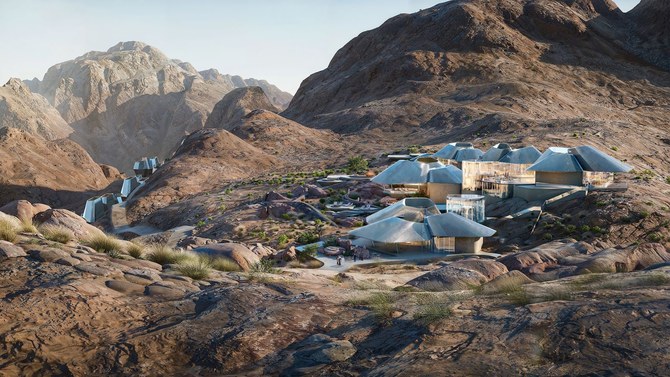
DUBAI: Marriott International, Inc. announced on Thursday that it has signed an agreement with Neom to open its second Ritz-Carlton Reserve in Saudi Arabia.
The hotel is anticipated to open in Trojena, a year-round mountain destination located in the northwest region of the country.
The resort is expected to feature 60 expansive one-to-four-bedroom villas. Plans also include a range of amenities including a spa, swimming pools and multiple culinary venues.
Chadi Hauch, the regional vice president of Lodging Development Middle East, Marriott International said in a statement: “Together with Neom, we look forward to bringing this ultra-luxury experience to Trojena. This signing also marks an important addition to our portfolio in Saudi Arabia where we continue to see a strong demand for our luxury brands.”
“Trojena is a rare destination, and we are delighted that Ritz-Carlton Reserve has hand-picked the mountains of Neom for their next property. Together we will create an experience that can’t be recreated anywhere else. Our visitors and residents will experience a sanctuary that will capture the magic of Saudi Arabia, embracing ultimate luxury in an unforgettable location,” executive director and Trojena region head Philip Gullett said in a statement.
Trojena, one of the flagship developments within Neom, is being developed and positioned as a year-round adventure sports destination that will include activities such as skiing, water sports, hiking and mountain biking. It will also include apartments, chalets, retail, dining, entertainment, leisure, sports and recreational facilities, and other hospitality offerings, including a W Hotel and a JW Marriott Hotel.
Ritz-Carlton Reserve currently boasts a collection of only six properties in destinations including Thailand, Indonesia, Puerto Rico and Mexico.


